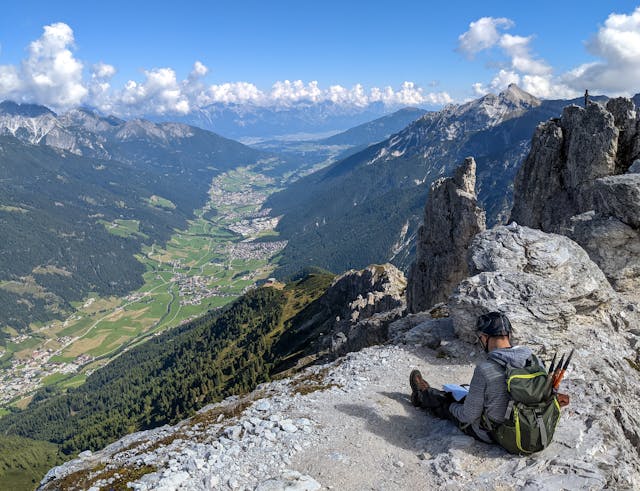 Overview: Get away from the bolts and experience the exhilarating rush of classic trad climbing in Europe. Europe offers a lifetime of routes where you can test your mettle, place your own protection, and develop a strong bond with the rock, ranging from majestic alpine ridges to towering sea cliffs. Let us investigate the best places that any traditional climber ought to have on their travel bucket list.
Overview: Get away from the bolts and experience the exhilarating rush of classic trad climbing in Europe. Europe offers a lifetime of routes where you can test your mettle, place your own protection, and develop a strong bond with the rock, ranging from majestic alpine ridges to towering sea cliffs. Let us investigate the best places that any traditional climber ought to have on their travel bucket list.
Contents
Gritstone Escapes: Peak District, UK
Why It is Unique: The renownedly gritted rock is the birthplace of British traditional climbing, where balance and gear placement are crucial.
The Vibe: A brief, daring, and frequently historically rich route that tests mental toughness.
The Sloth (HVS 4c), Chequers Buttress (VS 4c), and Gaia (E8 6c) are classic climbs that are a must-do for experienced climbers.
Best Time to Go: The best seasons for friction are spring and fall.
 Mediterranean Adventures: Calanques National Park, France
Mediterranean Adventures: Calanques National Park, France
Why It is Unique: Exquisite multi-pitch climbs with breathtaking scenery are available atop stunning limestone cliffs that rise straight from the sea.
The Scene: Magnificent vistas and exposed trad climbing require technical proficiency and a head for heights.
“Les Goudes” (6a), “La Paroi du Duc” (6b+), and, for the daring, “Surplomb du Toit” (7a) are must-do classics.
The best times to visit are in the spring and fall; the summer can be very hot.
 Alpine Grandeur: Chamonix, France
Alpine Grandeur: Chamonix, France
Why Is It Unique? Trad climbing with long routes and breathtaking glacier backdrops among the recognizable peaks of the Mont Blanc massif.
The Feeling: Ultimate mountaineering experience, blending trad climbing expertise with mountaineering knowledge. Alpine tradition at its best.
Classics that must be done include the “Rebuffat Crack” (TD), the “Contamine Route” on the Grand Capucin (TD+) for expert climbers, and the Aiguille du Peigne South Ridge (AD).
The months of June through September are the most stable for travel.
Limestone Delights: Dolomites, Italy
Why It is Unique: Exposed, vertical pale limestone towers with multiple thrilling pits and breathtaking views.
The Feel: Well-maintained paths with historical significance on frequently loose stone.
The classic routes “Vinatzer Route” (5.9) on the Marmolada, “Spigolo Giallo” (5.10c) for experienced climbers, and “Via Lacedelli” (5.10a) on the Cinque Torri are all must-dos.
The summer months of June through September are the best for travel, but be ready for crowds.
 Hidden Gem: Ailefroide, France
Hidden Gem: Ailefroide, France
Why It is Special: A haven for granite lovers in Europe, with gorgeous crack lines and multi-pitch climbs in a spotless mountain environment.
All grades of perfect cracks have a more laid-back atmosphere than Chamonix. Classics: “Fissure en Arc de Circle” (5c), “Pichenibule” (6b+), and “Parle Pas à Ton Voisin” (7a) for the challenging routes.
For the best conditions, go in the summer, especially in July and August.
Conclusion
Whether you crave the gritty challenges of the Peak District, the adventurous seaside cliffs of the Calanques, or dream of long alpine routes with jaw-dropping views, Europe offers an endless playground for trad climbers. Your next unforgettable adventure awaits, with gear in hand and the thrill of placing your own protection.
FAQs
I’m new to trad climbing. Is Europe a good place to start?
While Europe has climbs for all levels, it’s best to gain some trad experience closer to home first. Build your skills on well-protected routes and develop your gear placement judgment before tackling European adventures.
What gear do I need for trad climbing in Europe?
A standard trad rack includes cams, nuts, hexes, slings, and quickdraws. However, specific routes may require additional gear, so always research thoroughly and consider hiring a local guide if you’re unfamiliar with the area.
Do I need to speak the local language?
Knowing basic phrases is helpful, but the trad climbing community is often international. Climbing guidebooks in English are widely available, and you can utilize translation apps if needed.
What’s the best way to find partners in Europe?
Join online climbing forums, check out notice boards at local climbing gyms or campsites, and consider connecting with climbing clubs in the area.
Are there any resources for planning my European trad climbing trip?
Websites like UKClimbing.com, camptocamp.org, and theCrag.com offer extensive route information, topos, and trip reports. Many popular destinations also have specific guidebooks available.

 Mediterranean Adventures: Calanques National Park, France
Mediterranean Adventures: Calanques National Park, France Alpine Grandeur: Chamonix, France
Alpine Grandeur: Chamonix, France Hidden Gem: Ailefroide,
Hidden Gem: Ailefroide,